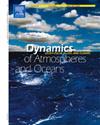The Caspian Sea as a full-scale experimental facility supported by altimetry measurements of wind-driven waves
IF 2
4区 地球科学
Q2 GEOCHEMISTRY & GEOPHYSICS
引用次数: 0
Abstract
The Caspian Sea is the largest inland water body. Strong and stable winds regularly occur along its longest stretch of more than 1000 km from the Volga Lowland in Russia to the Iranian coast. During these events, wind speeds can exceed 20 m/s and significant wave heights 5 m. These wind directions often align with the tracks of satellite altimeters that have been monitoring the sea state since September 1992. This makes the Caspian Sea an ideal location replicating idealized conditions for the growth of wind-driven waves, and supported by a high-precision network of satellite altimeters.
The shape of the coastline and prevalent wind directions allowed us to view the sea as a full-scale wind-wave research facility. In situ measurements and observations of sea state in this area are scarce and inaccurate while the altimetry tracks provide a ready-to-use high-quality measurement network. We analyze data of satellite missions Jason-3 for years 2016-2022 and CFOSAT (Chinese-French Oceanography SATellite) for 2019-2023 to assess the potential of the full-scale experimental facility. These missions provide valuable data showcasing the Caspian Sea as a realistic model for the World Ocean with minimal contaminating effects of swell, tides and currents. This makes the “clean cases” of the Caspian Sea particularly valuable both as a reference for understanding general wave physics and for regional studies on sea wave dynamics.

里海是一个全面的实验设施,由风浪的测高测量支持
里海是最大的内陆水体。从俄罗斯的伏尔加低地到伊朗海岸,最长的一段超过1000公里,强风和稳定的风经常出现。在这些事件中,风速可超过20米/秒,显著浪高可达5米。这些风向通常与自1992年9月以来一直监测海况的卫星高度计的轨迹一致。这使得里海成为一个理想的地点,复制了风力驱动的海浪生长的理想条件,并得到了高精度卫星高度计网络的支持。海岸线的形状和盛行的风向使我们能够将大海视为一个全面的风浪研究设施。该地区的海况现场测量和观测是稀缺和不准确的,而高程轨迹提供了一个随时可用的高质量测量网络。我们分析了2016-2022年Jason-3卫星任务和2019-2023年CFOSAT(中法海洋学卫星)卫星任务的数据,以评估全尺寸实验设施的潜力。这些任务提供了宝贵的数据,表明里海是世界海洋的现实模型,海浪、潮汐和海流的污染影响最小。这使得里海的“干净案例”作为理解一般波浪物理和海浪动力学区域研究的参考特别有价值。
本文章由计算机程序翻译,如有差异,请以英文原文为准。
求助全文
约1分钟内获得全文
求助全文
来源期刊

Dynamics of Atmospheres and Oceans
地学-地球化学与地球物理
CiteScore
3.10
自引率
5.90%
发文量
43
审稿时长
>12 weeks
期刊介绍:
Dynamics of Atmospheres and Oceans is an international journal for research related to the dynamical and physical processes governing atmospheres, oceans and climate.
Authors are invited to submit articles, short contributions or scholarly reviews in the following areas:
•Dynamic meteorology
•Physical oceanography
•Geophysical fluid dynamics
•Climate variability and climate change
•Atmosphere-ocean-biosphere-cryosphere interactions
•Prediction and predictability
•Scale interactions
Papers of theoretical, computational, experimental and observational investigations are invited, particularly those that explore the fundamental nature - or bring together the interdisciplinary and multidisciplinary aspects - of dynamical and physical processes at all scales. Papers that explore air-sea interactions and the coupling between atmospheres, oceans, and other components of the climate system are particularly welcome.
 求助内容:
求助内容: 应助结果提醒方式:
应助结果提醒方式:


